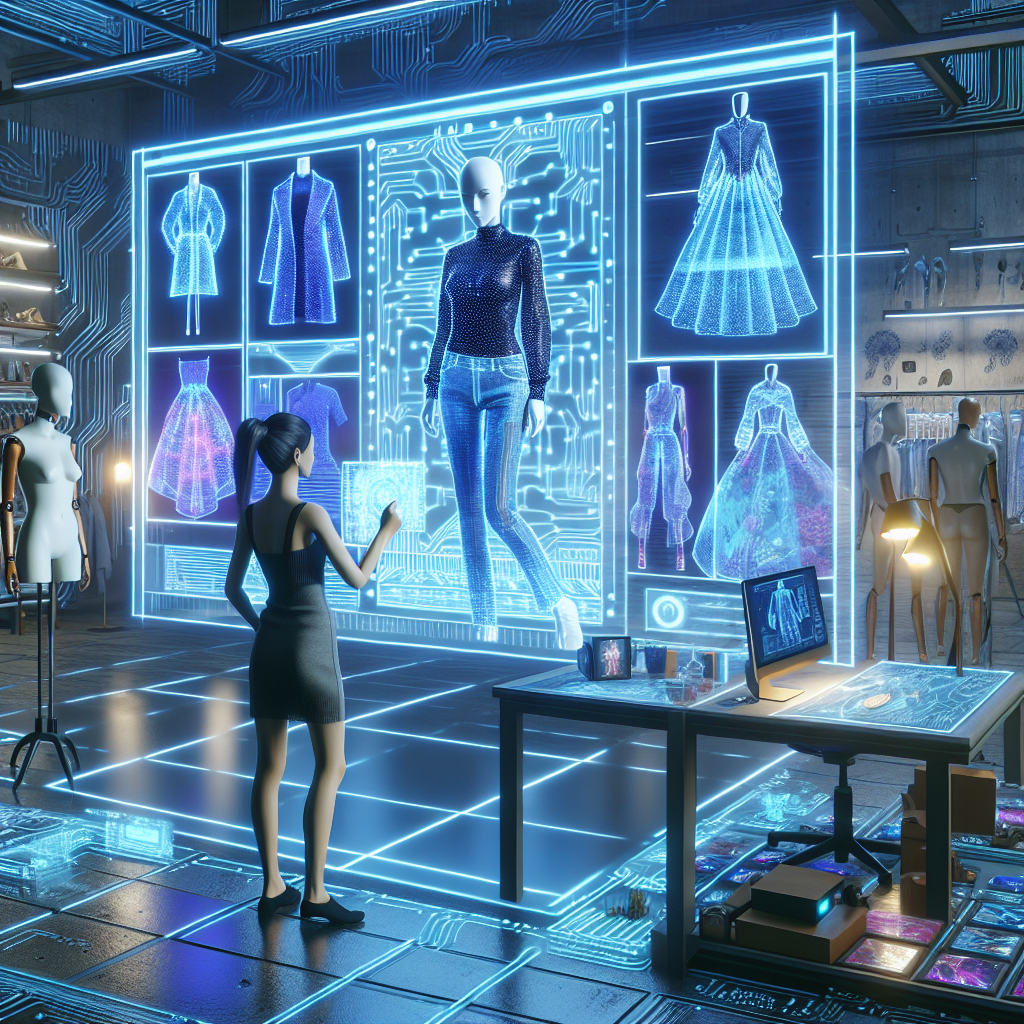Artificial intelligence (AI) has been making significant strides in various industries, and the fashion design industry is no exception. AI is revolutionizing the creative process in fashion design, making it faster, more efficient, and more innovative than ever before. From trend prediction to design creation, AI is playing a crucial role in shaping the future of fashion design.
One of the key ways AI is transforming the fashion industry is through trend prediction. AI algorithms can analyze vast amounts of data from social media, online searches, and sales data to identify emerging trends and consumer preferences. This allows designers to stay ahead of the curve and create designs that resonate with their target audience. By using AI-powered trend prediction tools, designers can make more informed decisions about color palettes, silhouettes, and fabric choices, resulting in more successful collections.
AI is also being used to streamline the design process itself. Designers can use AI-powered tools to generate design ideas, create digital sketches, and even prototype garments. This can save designers valuable time and resources, allowing them to focus on the creative aspects of their work rather than mundane tasks. AI can also help designers experiment with new techniques and styles, pushing the boundaries of traditional fashion design.
In addition to trend prediction and design creation, AI is also being used to personalize the shopping experience for consumers. AI-powered recommendation engines can analyze a customer’s browsing and purchase history to suggest products that align with their style preferences. This can help retailers increase sales and improve customer satisfaction by offering personalized recommendations to each individual shopper.
Furthermore, AI is being used to optimize supply chain management in the fashion industry. By analyzing data on production costs, labor availability, and market demand, AI algorithms can help designers and manufacturers make more informed decisions about sourcing materials, production timelines, and pricing strategies. This can help reduce waste, improve efficiency, and increase profitability for fashion brands.
Overall, the future of AI in fashion design is bright. As technology continues to advance, we can expect to see even more innovative uses of AI in the fashion industry. From virtual fitting rooms to AI-generated designs, the possibilities are endless. By embracing AI, designers can unlock new creative possibilities and stay ahead of the competition in an ever-evolving industry.
FAQs:
Q: Will AI replace human designers in the fashion industry?
A: While AI is capable of assisting designers in various aspects of the creative process, it is unlikely to completely replace human designers. AI lacks the emotional intelligence, intuition, and creativity that human designers bring to the table. Instead, AI is best used as a tool to enhance the creative process and help designers bring their visions to life more efficiently.
Q: How can designers incorporate AI into their creative process?
A: Designers can incorporate AI into their creative process by using AI-powered tools for trend prediction, design generation, and personalization. By leveraging AI technology, designers can make more informed decisions, save time on mundane tasks, and experiment with new techniques and styles.
Q: What are the ethical implications of using AI in fashion design?
A: As with any technology, there are ethical implications to consider when using AI in fashion design. Designers must be mindful of issues such as data privacy, bias in AI algorithms, and the potential impact on jobs in the industry. It is important for designers to use AI responsibly and ethically to ensure that it benefits both the industry and society as a whole.
Q: What are some examples of AI-powered tools in fashion design?
A: There are several AI-powered tools available to designers in the fashion industry. For example, trend prediction platforms like Edited and Stylumia use AI algorithms to analyze data and identify emerging trends. Designers can also use tools like Autodesk’s Dreamcatcher to generate design ideas and virtual fitting rooms to personalize the shopping experience for consumers.

